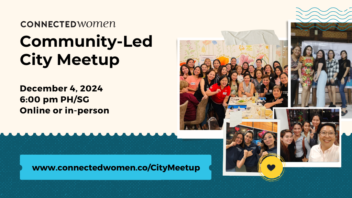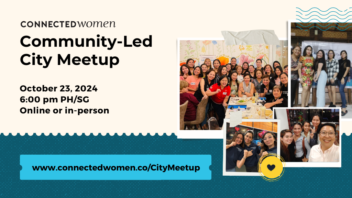Product Marketing For Product Success – From Conception To Launch
 Contributed by
Vicki Lew
December 23, 2017
Contributed by
Vicki Lew
December 23, 2017

Huh, product marketing eh? What exactly do you do?
This month, we have our pal, Yvonne Chow, guest blogging for us!
A marketing and cross-functional professional at heart, Yvonne has worked in four vastly different industries in both B2C and B2B capacities. Yvonne uses core product and consumer marketing principles in her work, and strives to understand how to build solutions technically but always beginning with the end user in mind in all projects.
Hello! I’m Yvonne, your resident product marketer, here to demystify what product marketers do. Everyone has a different definition so by no means is my definition the correct one, but here’s what I know after 10 years of being a product marketing manager (PMM for short).
See that middle bit? That’s where a PMM usually sits. Given that we’re “product” marketing, our work begins before a product launch and continues post-launch.
Before launch, PMMs:
- Define the target customer
- Work with cross-functional partners (e.g. Sales, Product) to determine a product or solution fit for the target customer
- Gather customer feedback
- Get involved with product functionality tests and UI/UX tests à I’ve been told that this isn’t always the case, but I’ve been lucky to be part of a team that embeds all cross-functional partners in this process
- Own product positioning and messaging
- Own the overall go-to-market strategy, which includes internal sales education and external customer communication
After launch, PMMs:
- Ensure the continuing growth and success of the product together with the cross-functional teams
- Measure success with metrics such as revenue and customer growth
After this rather lengthy explanation, the next question is “OK – so tell me what it takes to successfully launch a product!”
Great question – here are my top 5 tips:
1. Know your product, customer, and competitive landscape.
Be humble – you may not be the incumbent, and there may be similar yet cheaper options out there compared to your product. Understand how other products work and how competitors position themselves and their solutions to your target audience. This will help you build a stronger unique selling point and value proposition for your product.
2. Believe in what you’re solving for – and have the numbers guide you.
Passion is key, but so are numbers to help you stay realistic. Think about your costs versus your revenue numbers. It’ll help you when you plan your budgets for your internal and external marketing campaigns.
3. Be clear with your idea by getting proper sign-off and alignment across cross-functional teams.
Companies and teams that have clear business requirements/scope of work documentation are more successful than those who don’t. Put simply – clear documentation helps with managing the scope of work, expectations, and commitment.
4. Test, test, test!
On two fronts: that the product works (functionality) and that customers find it intuitive (UI/UX). Customer feedback and validation are so important in ensuring that you’re building a solution that meets their needs and solve their pain points.
5. Setting sales and customer support teams up for success.
Don’t get caught up in your world of building and launching a product. Being a cross-functional partner is key, and that means including customer-fronting teams such as sales and customer support in your product build phases too. You’ll build internal allies who understand why a solution is being built. Next, don’t forget to build documentation that is easily found and referenced by these teams when they need to help solve a customer problem.
That said, building and launching a product takes a cross-functional team – not limited to just the marketing function or even a combination of marketing, sales, and product.
The most successful product launches I’ve been part of is where all team members had an equal say and stake. The team comprised of members from product, marketing, sales, finance, legal, design, and engineering, with transparency across product phases, requirements, and go-to-market launch plans.
What are your thoughts? Connect with our guest blogger, Yvonne on LinkedIn and share what you think with her!










Sorry, the comment form is closed at this time.